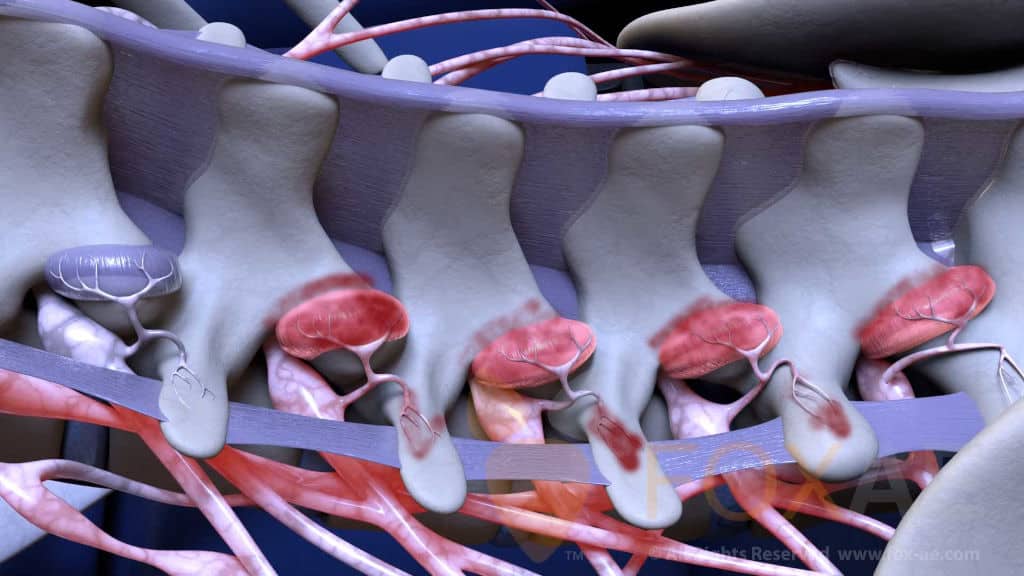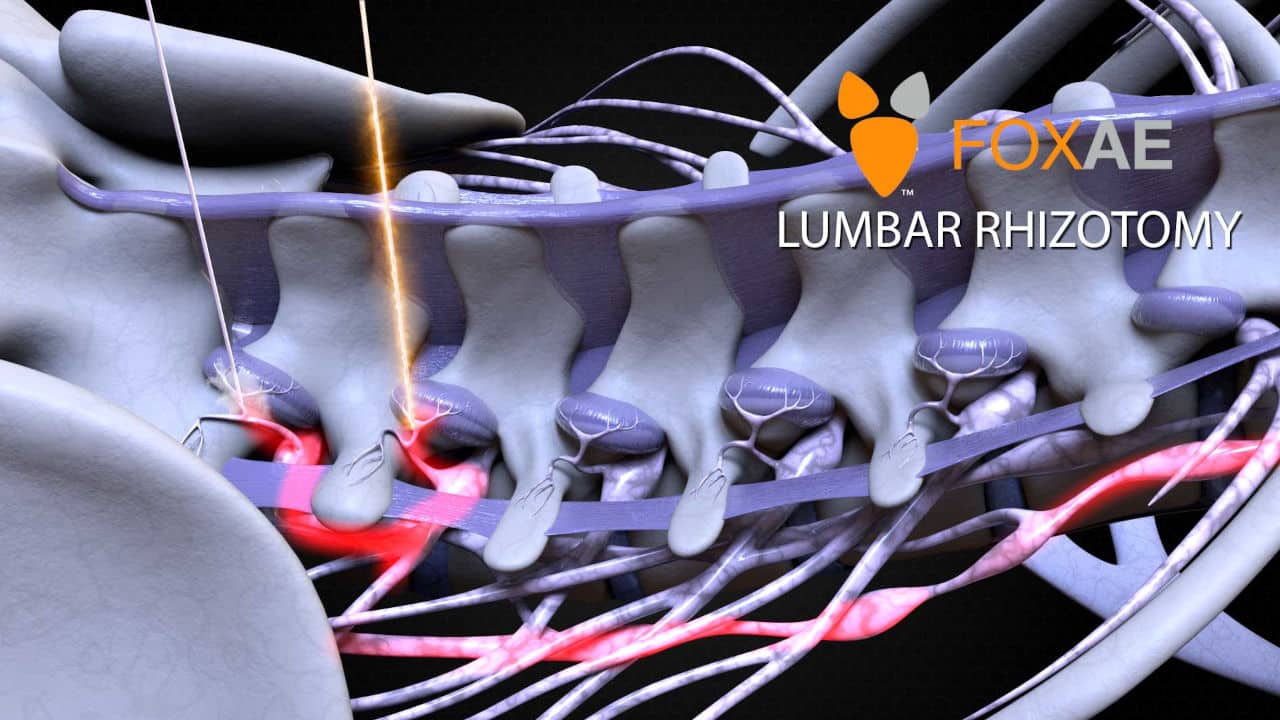Rhizotomy is a minimally invasive procedure that entails cutting the nerve roots that transmit pain signals to the brain. These roots are cut where they are supposed to enter the spinal cord. Therefore, the pain signal cannot reach the brain.
These nerve fibers are severed using a surgical instrument or burning with a chemical or electrical current. This procedure is done under anesthesia, depending on the location of the nerve fiber.
It is recommended for victims of chronic back pain, neck pain from arthritis, herniated discs, spinal stenosis, joint pain, and other conditions concerning peripheral nerves and spasticity.
Rhizotomy acts is a simple procedure that has created huge relief for several years. It is also known for its quick recovery time. Most patients go home on the day of their surgery and return to their means of earning a living one or two days after.
This procedure, also known as radiofrequency ablation, soothes patients with its advantages. It allows the surgeon to see the exact target nerves using fluoroscopy or other image-guided techniques and work precisely. It provides long-term relief compared to other pain management options.
However, rhizotomy is not recommended for pregnant women, people with infections, or a bleeding disorder.
Also, the doctor must take extra precautions before the procedure is done to ensure it goes smoothly. With all these preparations and advice, it’s wondrous how complications could arise with such an easy and swift procedure as a rhizotomy.
These complications are why people who go to court for medical malpractice in rhizotomy are considered carefully.
What then happens when these people have an aid like legal animation? It’s a win as smooth as a rhizotomy procedure!
Types of Rhizotomy
There are three types of rhizotomy, and they all involve cutting the nerve fibers that send pain signals.
The glycerin/glycerol rhizotomy involves using a needle to inject a small amount of glycerin or glycerol into the target nerve roots.
Another is the radiofrequency rhizotomy, which uses radiofrequency current instead to burn the fibers.
Lastly, the endoscopic rhizotomy involves the insertion of a camera device called an endoscope into the body. This helps the surgeon pass functioning organs and go straight to the target nerve.
Like every surgery, experiencing pain, bruising, and swelling at the site of surgery is normal. What’s not normal is huge risks destabilizing your usual way of life.

Complications and Risks of Rhizotomy
The risks associated with rhizotomy depend on the type of procedure and the nerve operated.
Dangers familiar to the glycerin/glycerol rhizotomy are; severe bleeding, nausea, vomiting, infection, complications with anesthesia, and sensory changes like the feeling of numbness.
On the other hand, rhizotomy done with radiofrequency has a higher chance of sensory changes. Some include numbness and paralysis.
An instance is seen in the case of Levy v. Thomas Jefferson University. Here, the plaintiff claimed she was admitted to the hospital to undergo surgery to sever her fifth cranial nerve and get relief from her facial pain. A retrogasserian rhizotomy was conducted to destroy the nerve fibers of the first and second branches of the fifth cranial nerve.
However, the plaintiff claims she suffered injuries, fifth and seventh nerve damage, from the rhizotomy procedure as a result of the negligence of the operating doctor. These injuries resulted in total paralysis of the left side of the plaintiff’s face.
Another example of a complication arising in this relatively straightforward procedure is the case of Hales v. Pittman.
The plaintiff claimed he went to the defendant to treat his tic douloureux, also known as trigeminal neuralgia. It is an illness that causes intense facial pain that occurs in spasms.
The defendant performed a surgical procedure that, unfortunately, destroyed the nerve fibers of the ophthalmic division. This resulted in anesthetization of the right eye’s cornea and a loss of the blink reflex and tearing mechanism. The plaintiff claims malpractice on the part of the defendant.
Even though there’s a high chance of success in a rhizotomy procedure, there are medical malpractice and negligence cases. These factors can alter that percentage and cause permanent disfigurement of the victim.
How Legal Animation Can Help Highlights Risks
Nerves are a very fragile part of the body since they are the medium between parts of the body and the brain. They send all the signals, so it is only sensible that surgeries concerning nerves be carried out carefully.
It’s disheartening for a patient to walk into a hospital to treat a severe and painful issue, come out with a more significant problem, and even worse over a simple procedure. The only excuse for such happening is absolute recklessness on the surgeon’s part.
For this reason, they must win such a case. However, since it’s a medical case, it would be challenging for the jury to understand the problem involved.
This point is where legal animation comes in. It is, after all, scientifically proven that things that are seen are better understood than things explained with word of mouth. Legal animation visually represents complex cases like medical cases for easy understanding.
In such cases, videos can be provided. The animation can display how each of the various types of rhizotomy is carried out.
These videos help the jury see how simple and fast the procedures are expected to happen.
Next, the attorney can present demonstrative exhibits to show the court the point of error in the surgery. The court could see at which end of the surgery the medical mistake caused the damage to the victim.
Whether the wrong nerve was cut, the medical personnel cut it wrongly, or whatever reason, it will be displayed clearly in the court. This jury would watch the negligence play out on the surgeon’s part.
Also, the lawyer can provide trial animations to compare the patient before and after the surgery. An example is the case above, where a patient went for facial pain treatment. The court can see how he has lost corneal sensation, the ability to blink, and even his tearing mechanism because of the surgery.
These complications would terribly affect his normal day-to-day activities, leading to mental and psychological issues such as depression.
In conclusion, rhizotomy procedures can be illustrated by medical animators at Fox-AE. Whatever facts and circumstances surround a case of rhizotomy, our animators can create a demonstrative exhibit that shows this.
We work closely with attorneys and expert witnesses on a case to ensure that we create admissible demonstrative exhibits.





